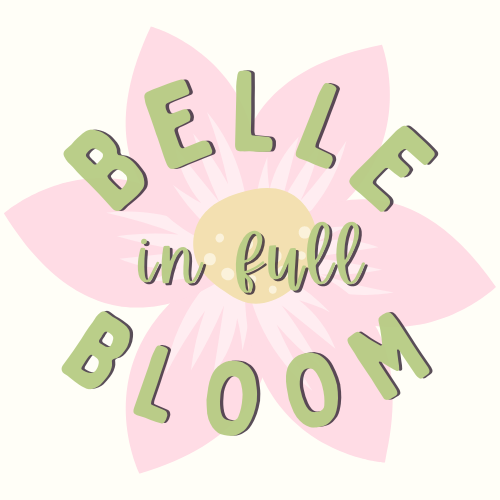Personal finances are intimidating. Especially when you have no idea what you’re doing.
I’ve acquired a lot of knowledge about personal finance over the years because I find it incredibly fascinating, and I want to set myself up for success. As of right now, I don’t quite have the means to put it in motion (thank you, full time undergraduate degree program), but I still have a pretty solid plan for my finances once I’m finished with school. If you have no idea where to start, or what you should be doing, I would love nothing more than to help you out. There are so many steps that you could take first in your financial journey, but there’s a certain order that financial experts often put them in.
What do I do first?
The first step in every financial journey should be an emergency fund. Many personal finance gurus recommend that you keep the fund tucked away in a high yield savings account, where it will accrue more interest over time. Typically, experts will recommend that you begin with $1000 and then increase the fund eventually. Ideally, this emergency fund should house about three to six months of living expenses. This way, if you were ever in a true emergency, you could still be financially secure. You would know that you could still have a roof over your head, or money for groceries, or a car. It allows you to live your life with so much more peace of mind. I am currently in the process of building my $1000 emergency fund, and I could not be more excited about it.
Okay, I’ve got the emergency fund saved up. What now?
Now, we tackle your debt. There are so many different ways that you can do this, but my favorite is the Debt Avalanche Method. In this strategy, you list all of your debts out by interest rate from highest to lowest. From there, you’ll begin paying off the debts in this order. For instance, I have a few different federal student loans. The highest interest rate out of all of them is 4.990%, and the lowest is 2.750%. When paying off my loans, I am going to be starting with the loans with the 4.990% interest rate. This way, I end up paying less in interest in the long run.
Another method you could use to pay off your debt is the Debt Snowball Method. In this strategy, you start by paying off your smallest debts first. Let’s say that you have $3000 in credit card debt, a federal student loan for $5000, and a private student loan for $10000. In this method, you would start by paying off the $3000 in credit card debt. The reasoning behind this is that the debt payer will feel more accomplished in using this method. That $3000 loan will get paid off quicker than the other two, which motivates you to stay at it for the long haul. It’s understandable why people would like this methodology, but I would personally prefer to pay less interest on my debt. Honestly, I also don’t think I will need extra motivation to keep paying off my debts. I mean, I’m writing you a blog post about how I plan to do it.
Cool. I have paid off all my debt (or most of it) and I’m more financially free. Where do I go from here?
Okay, now would be a great time to start working on putting more of a buffer in your emergency fund! If you’re at $1000, calculate what a few months of living expenses would be in total for you. Once you’ve got the number, you’ve got your goal!
Additionally, now would be a great time to start investing. I know that’s a terrifying word (I, too, am also terrified of it), but it’s the only real way to grow your wealth. I’m not as educated in this department as I’d like to be (I am working on it), but from what I have heard, there are lots of ways to make it less scary. For one, you can use a robo-advisor. For these accounts, you can pay an extra fee for a computer system to decide which stocks to put your money into. Many robo-advisor accounts will also balance out your ratio of stocks to bonds if it gets out of whack. Basically, it does more of the hard parts for you, which leaves some people feeling much more comfortable. You could also use the more traditional financial advisor route, and have an actual human being help you invest your money. However, this can become a lot more costly.
Okay, so what’s your plan for investing?
You guessed it, I’m not doing either of those things! Why, you might ask? Because I’m cheap, of course! When I begin investing, I plan on doing it the DIY way. It is the most cost effective, and really, you don’t need to over complicate investing. I’ve done a decent amount of research on index funds, and I know that that’s where I want to put my money. They have a great track record, which I love, and they’re a lot more accessible. Vanguard is known for their index funds and low trading costs, so I will probably open up a brokerage account with them. Many people would probably say that my idea of the perfect investing path sounds lame, since index funds are the opposite of a get-rich-quick scheme. However, I find comfort in knowing that in these funds, my money will be growing safely over time. I’ve never been someone to take extreme risks with my money, and I would rather keep it that way, even if that means waiting for interest to build.
That’s just my personal plan, though! If you’re looking for more of a gamble, have at it. I would never try to tell you exactly where to put your money. I’m just here to share what knowledge I have acquired with other powerful women who deserve financial freedom.
Woohoo, I’ve done the investing thing! Now what?
Keep at it! Continue building your emergency fund, keep investing, and start more sinking funds. Maybe you want to buy a house now, so you start a high yield savings account for a down payment. If you want to travel, start a fund for all the destinations you want to hit! The world is your oyster. Your journey is your journey, and you’re doing all the right things!
I’m only at the start of my journey. Wherever you are in yours, I would love to support you. Connect with me via email here, or follow me on Instagram, Facebook, and TikTok. I’m so proud to be doing this thing with you!

